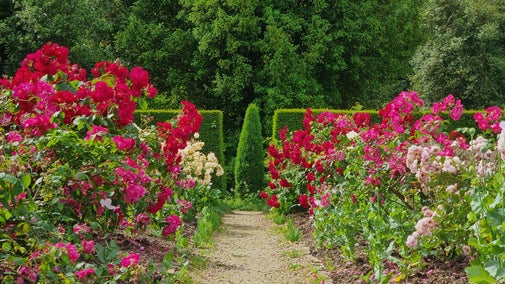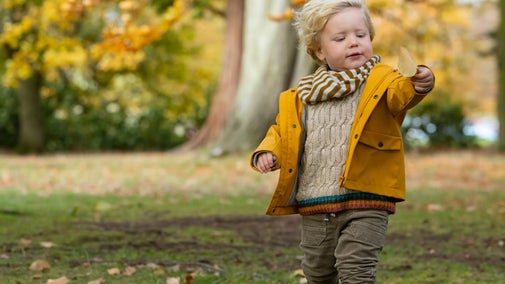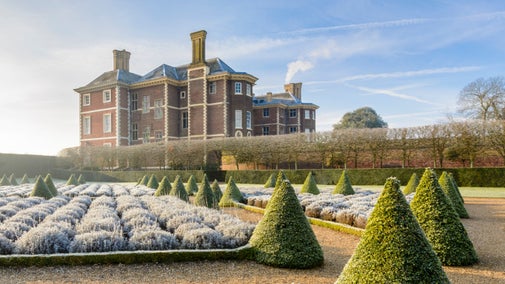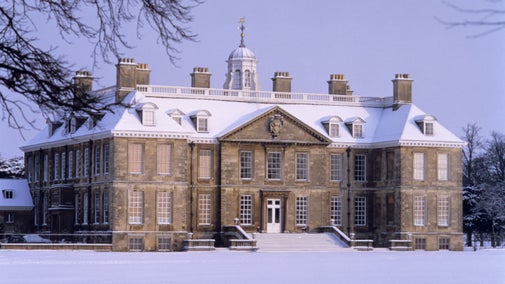
Book your visit to Gunby Hall and Gardens
Please note you need to book tickets to Gunby Estate, Hall and Gardens. You can book for today up until 8am. Every Thursday time slots will be available for the next 14 days.

Explore Gunby Hall, which was home to the Massingberd family for over 250 years. Explore intimate living spaces filled with notable objects, artistic works, and homely décor.
Please note that on the day of your visit, some areas may be closed at short notice.
The Massingberd family lived at Gunby Hall from 1700 until 1967, having previously lived at nearby Braftoft Manor (which you can see for yourself on a walk across the estate). Gifted to National Trust in 1944, Gunby was tenanted from 1967 until 2012, after which it became fully managed by the Trust.
The main body of the house was built in 1700, an extension was added in 1873 which was completed in 1898 to become the building you see today.
Diana Montgomery-Massingberd’s new room ended its career in 1998 when the missing wall was re-built with the help of money from the sale of books belonging to James Lees-Milne. In the once-more symmetrical hall, the builder, Sir William Massingberd, dominates again from his portrait over the mantel.
Below, between two watercolour portraits of the Revd. Algernon Massingberd and his sister Mary Neville, hangs a frame containing four lines of manuscript. This precious scrap is signed by the local poet Alfred Tennyson. The lines are from his epic poem ‘The Palace of Art’ and are believed to describe Gunby, which Tennyson knew well.
In one of the family scrap books is a faint pencil sketch by his friend Algernon Massingberd showing the poet as a gangling young man, all quiff and cravat, smoking his long-shafted clay pipe.
– Alfred Lord Tennyson, 'The Palace of Art' 1832
This is considered to be the remains of one of the best examples of a squire’s library to survive. Largely collected between 1690 and 1730.
Above the bookcase on the wall opposite the fireplace is part of a Chinese porcelain dinner service, made for export to Europe in the late eighteenth century. It was re-assembled here in 1998 after the wall was re-built for having been removed in 1926 to create a large ‘sitting-hall’ and the books scattered about the house. Some of the untidier books were even burned.
The odd proportions of the hybrid room that resulted, created to facilitate the taking of alcohol by guests in an otherwise teetotal house, are best appreciated next door.
– Peter Hoare, Library Report 2002
The study is currently closed while extensive conservation work takes place.
Historically this was the morning room, catching the early sun from the east. Now it houses the considerable military library belonging to Field Marshal Sir Archibald Montgomery-Massingberd.
The Field Marshal was an author of some repute on his own account, writing the history of the Fourth Army in the ‘Hundred Days’ of 1918 and publishing tracts on strategy and tactics as well as a slim volume of autobiography.

The staircase, with its triple twisted slender balusters, is dated by Nikolaus Pevsner the architectural historian to c. 1730. Together with the Venetian window, plaster panelling and cornice, he attributes this space to William Meux-Massingberd (1703–1781).
The suit of armour is mentioned in Hugh Montgomery-Massingberd’s book ‘Daydream Believer’, recording a prank designed to ridicule a local news story of the haunted nature of Gunby. He and a group of friends in fancy dress, including the armour, went down to the gate and paraded round the roundabout on the main road, ‘gurning and grimacing’ until ‘the traffic was brought to a complete standstill’. His father was quite amused, but Rogers, the caretaker at the time was not, barring the door and calling the police.
The shape of this room has altered too. When Charles Langton-Massingberd added the north wing containing a dining room, this space was created out of the old dining room and butler’s pantry to act as a drawing room. A homely note is struck by the use of a couple of old bed posts to mark the former division. A few years later with the creation of the music room, this space reverted to its former use.
Further round the room ‘Naughty’ Algernon, who brought the family finances to the brink of disaster, smirks on a rocky shore resplendent in his naval uniform. His be-whiskered Uncle Charles hangs nearby.
The two sets of dining chairs are both good examples of the refined forms of early Regency taste, with sabre legs and caned seats. One set is painted with lions’ masks whilst the other exhibits the Eye of Horus carved on its cresting rails and is an example of Egyptian taste. The marquetry longcase clock is by Matthew Bunce, who probably died very shortly after making this clock in about 1700.
This staircase rises from the basement to the top floor and connects the 1873 north wing to the old house. It is decorated for much of its height in the ‘Daisy’ pattern wallpaper designed by William Morris and printed for the first time in 1864 by Jeffrey and Co.
The charcoal sketches of the three Lushington sisters are preparatory drawings for the painting The Home Quartet that their father, Vernon Lushington, commissioned from Arthur Hughes. A modern print of the painting hangs above.
The drawing of the head of Margaret Lushington, wife of Stephen Massingberd, is by William Holman Hunt. Both Hunt and Hughes are considered amongst the most talented painters of the pre-Raphaelite brotherhood.
Entering the old house into what was formerly the housekeeper’s room, this room became an ante room to the new dining room as part of the alterations of 1873.
A watercolour of the house in Kensington Square where the young Massingberds lived in the 1890s hangs on the left and a study of a moss rose by the celebrated garden designer Alfred Parsons hangs on the right.
The next room you'll visit is the oak panelled music room. Running the full length of the west front of the 1873 wing, this room only came into existence in its current form in 1898.
It was in this room that Diana Massingberd (1872–1963) coached her string ensembles and here that singers sang and choirs rehearsed. The Bluthner grand piano, specially strengthened against the rigours of intercontinental travel, went out to India with Diana and Archie on his postings there.
If you are a competent piano player and would like to have a go at playing the grand piano, please speak to a member of the team during your visit.

The basement runs under the entire house, mimicking the plan of the main apartments above. The addition of the north wing in 1873 greatly expanded the service areas below stairs and enabled the re-distribution of tasks to different areas; the larder was established under the stairs on the south front of the house with the still room, complete with its own range, to the east.
In the still room tea was made for the household whilst the main kitchen was taken up with the preparation of dinner. It was also where the preserves, jams and chutneys were made in season from fruit and vegetables from the garden. The 'boot room' offered cellarage for beer, with wines housed under slightly greater security further along the corridor.
There is currently extensive conservation work being undertaken upstairs in the house, which means rooms are inaccessible. However, the first floor is partially open for you to enjoy the Pioneer Rooms and see inside The Pink Bedroom.

Please note you need to book tickets to Gunby Estate, Hall and Gardens. You can book for today up until 8am. Every Thursday time slots will be available for the next 14 days.
From the remnants of a medieval village to a charming red-brick house with a Victorian flourish, Gunby was home to the Massingberd family for over 250 years—though the estate’s story stretches back even further.

Discover eight acres of different garden ‘rooms’ with many different colours and textures to enjoy. Throughout each season there is something different to see.

Find out more about the 1,500 acres of the Gunby Estate. Take a walk to discover an ice house pond, remains of a lost village and find evidence of a demolished medieval moated manor.

Make memories together at Gunby. Step inside the house to uncover its fascinating stories, wander through the gardens on your own little adventure, and take time to pause in the tea-room.

Historic houses and buildings are full of stories, art and collections. Learn more about their past and plan your next visit.

Explore the diverse range of houses and buildings in Nottinghamshire and Lincolnshire, from historic churches and country houses to a Victorian workhouse.
